#ds9 has 4 dvds for every season
Explore tagged Tumblr posts
Text
I watched Enterprise on Netflix the last weeks, but I thought it would be better to watch the DVD on my computer because of the timestamps...

I am so confused the first DVD is literally only the first (two) episode(s). Then it took me a few seconds to figure out launch is start and when it played in english and I needed to change the language it took me again a few seconds to realise communications meant languages. LOVE IT THOUGH. But I was so confused. The DS9 DVDs are completely different.
But yeah, I am going to watch the pilot episode and do the commentary, while I wait for my food to arrive from the new indian restaurant. I hope butter chicken and mango lassi taste good, I paid more than 20€ for that and there is no one at home who would eat the leftovers.
And yeah I watch in german because I need to get used to the english voices and honestly at the moment I still hate Archers english voice. The german voice is so calm and soft.
#star trek enterprise#dvd menu#I LOVE IT#but i was confused#why is it only the pilot?#also there are so many dvds for each season#ds9 has 4 dvds for every season#ent has 7#why
7 notes
·
View notes
Text
Here be my Voyager Finale thoughts, beware:
I first saw this show as a ten year old, circa 2005. My Dad had returned from a work trip with three DVDs- Season 4 of Star Trek: TNG, Star Trek: First Contact (The TNG movie), and set of Borg themed episodes from TNG/VOY/DS9 (I think? I never watched them lol). I remember watching the First Contact movie clearly, just as I remember my Dad handing me the Borg themed DVD and telling me to watch VOY 3x26/4x01- Scorpion Part 1 & 2. He thought I would really like B’Elanna. (Clocked!)
I watched all of the VOY episodes, including Dark Frontier (Staring little Seven of Nine!!!), and of course, Voyager’s finale- Endgame. I had no context of the first three seasons at all, or even the non-Borg episodes, which no doubt colored my perception.
But I remember- so clearly, how much I loved it. I loved the time travel aspect, of Admiral Janeway deciding to go back and bring her crew home again. I remember being more or less introduced to Harry Kim via Captain Kim from the Endgame timeline, I remember loving Tom and B’Elanna and their grown up daughter, being scared of the Admiral, not really knowing who Neelix was (lol).
And that was all had of Season 7 for so long! I luckily got season 5 and 6 when I turned 12, and watched those episodes, and luckily, caught so many reruns on Spike TV. I didn’t get season 4/7 until later, and just got the first three seasons for Christmas last year.
I didn’t have a chance to watch the show all the way through until I was a sophomore in high school. My best friend had introduced me to the golden age of Youtube- that is to say, back when people could upload any tv shows they wanted onto youtube, if only in 15 minute chunks. (We watched the Canadian cartoon “Braceface” that way, fun fact!) And then, I got lucky enough to find a channel that had uploaded every episode of Voyager to YouTube.
So, I spent the second half of my sophomore year of high school watching the show. It was the first live action show I sat down and watched this way, going through each episode in order, one and night (I was so good back then. I miss that self-control!). So I watched it!
I remember getting to know all of the characters, to see them from the messy beginning of Starfleet and the Maquis, watching Kes and Neelix and the EMH grow up and into their characters. I remember loving the whole show- but finding myself preferring the later half, even then. I do remember being so surprised that C/7 only expressed romantic interest in the last bit of season 7, I remember even then, not liking the twist of their relationship at all.
Now, I am a decade older! I have finally rewatched the entire thing, and overall, my impression has changed, I think for the better!
I love the earlier seasons a lot more than I had before- there’s plenty to criticize, don’t get me wrong- but they have a charm to them. Watching the two crews get used to each other, watching them get used to their place in the DQ, watching the characters slowly come together- there’s something very satisfying about it now. I particularly love season 3, far more than I used to.
The second half of the show- it might be a mixture of nostalgia and honest improvement, but I still think it’s incredible. Season five remains my favorite, but I am shocked, really, at how close season seven came to challenging that. There are very few duds in the last season, and despite alot of what I hear from people online about the finale, I don’t think it’s a dud! I think it’s great!
The last few episodes really hit some of my favorite Voyager premises really well. Friendship One mixed a good old fashion Voyager episode in the caves with a good moral dilemma. Natural Law had Chakotay crash a shuttle. Renaissance Man let B’Elanna run around fix the ship and had the Doctor do something funky with his matrix, and really showed how much his relationship with Janeway had grown.
Then there was Endgame. I associate Voyager with two Star Trek tropes primarily- time travel and the Borg. Think of the show’s greatest hits- Year of Hell, Scoprion, Timeliness, Unimatrix Zero, Before and After, Shattered, Future’s End- lots of time travel and Borg! Endgame takes them both to an extreme- Kathryn deciding that getting the crew home at all wasn’t good enough, and instead, she had to get them home earlier. Despite what the Admiral told the Captain, she was already embracing being reckless again- who could call that plan anything but reckless! And the Borg might not have been at their most terrifying, but the discovery of a transwarp conduit is an overwhelming draw for the Voyager crew.
It was a good mix! I think that’s not the problem. If anything, I think the premise needed more time. I had forgotten the Admiral doesn’t even get there until the second part of the two-parter, and really, how much time was taken up by her talking with the Captain.
I would have give the episode more room to breathe- made it a threeparter. And I would have forced Kathryn to come to terms with her feelings for Chakotay, and force her and Chakotay and Seven to really have it out. (Ideally, there would have been no C/7 at all, but what can we do!) I think the episode plays it out in interesting ways- showing Kathryn at Chakotay’s grave, showing the admiral react more to Seven than Chakotay- but there’s the unspoken realization of the narrative that sending the ship home might break them up entirely.
The interesting scene where Seven tries to dump Chakotay shows the writers had considered it- but they didn’t go through. Instead, Chakotay doubled down, told her he didn’t want to end it. It of course, being a relationship that is four dates old, built on a premise that Seven didn’t share with Chakotay (the hologram program) and interestingly at odds with the EMH confessing his love to Seven just an episode before. (Why? why did that happen? Why wasn’t the peak of the EMH’s confessions just that he’d kissed Tom in B’Elanna’s form? I think that would have been funnier lol).
I know so much of C/7′s role here to simply not be J/C, but the entire premise of the episode is that Seven dies, Chakotay pulls away from Kathryn, dies young, and she sort of loses her mind and tries to time travel to fix it. It’s almost unspoken how much of the premise rests on J/C (romantically or platonically).
I think the end of the show would have been stronger if they’d started to play with J/C either post Shattered or post Workforce. It would have shown Kathryn finally coming to terms with the length of their journey, of finally letting her shields down and letting Kathryn peek out underneath the Captain Janeway armour.
But it wouldn’t have worked with the finale! So I, a J/C shipper and a Endgame fan, is stuck here, not being able to connect the two.
The other idea I had, was to make the show’s run tighter, and have this episode at the middle of season 7, and spend the rest of the season fighting battles with the Starfleet brass to let the Maquis keep their commissions and stay out of jail- to fight for the Doctor’s rights, for Seven’s right not be locked up in a lab somewhere, to let Neelix (he should have made it Earth! I’m still sad!) walk freely. I think the show spent so long in the beginning getting the crews to integrate- it would have been nice to see that come to head.
Instead there’s very little Starfleet/Maquis content in the finale at all. B’Elanna and Chakotay don’t even get to interact! (All of his scenes are with Seven. I’m not bitter (I am) but he has other relationships!)
I still love the finale overall. It would take a lot to make me mad at episode where B’Elanna finally gives birth and Harry gives a little speech about the importance of a journey (which i copied down in my journal as a child word for word. true Harry Kim Stan). They get home! Really, that’s what mattered.
And now, I get to watch Star Trek: Prodigy! A show I didn’t have as a sixteen year old, or even the six year old I would have been when the show was actually ending. I do get to see what comes next. Which is exciting, and takes a bit of the edge off.
So- The finale’s good, I love it. Could have been better, but that’s life. Paramount Plus just needs to slip me J/C and I can forgive everything. lol
Farewell, Katie’s great 2021 (-2022) voyager rewatch. you were fun. thanks for following along if anyone dared to!
#Katie's great 2021 voyager rewatch#st#voy#j/c#janeway x chakotay#deeply this needs to be tagged that lol#ANYWAY. I have other shows to watch. but i'm trying to decide between TNG or TOS as the next ST show.#still considering.....#didn't mention in this but! I love B'Elanna and will say more about her and everyone else later. I'm tired haha
5 notes
·
View notes
Text
A List of Older Fandoms for Quarantine Viewing
I thought it might be fun to put out a list of older fandoms or smaller fandoms that might be of interest to folks here. As we’re all still stuck with quarantine, perhaps you’re looking for some new/old media? Perhaps this list could help?
This is halfway between a rec list and a charting of my own fandom history. For anyone looking for some new fandoms to check out that are various flavors of interesting and a little older, check ‘em out!
Feel free to add your own!
In no specific order (other than maybe my DVD shelf??)
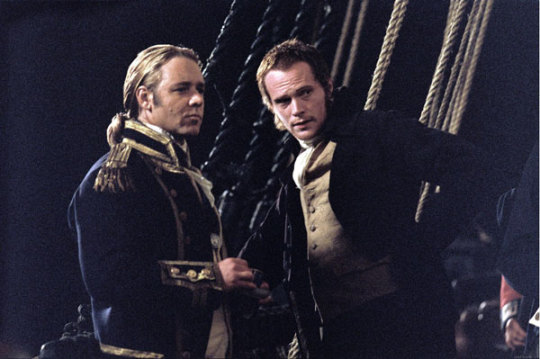
Patrick O’Brien books/Master and Commander - this was a fairly good-sized fandom back when the movie ‘Master and Commander’ came out. A must-watch for anyone who likes historical fiction, age of sail, and powerful homoeroticism.
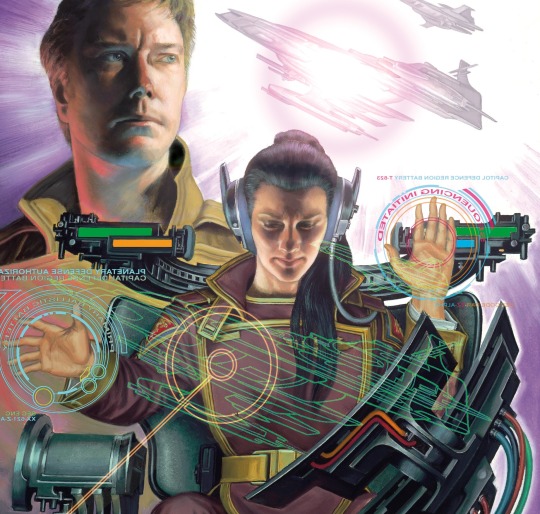
David Drake’s Royal Cinnabar Navy series - did you ever want Master and Commander in space, but Stephen Maturin is a librarian named Adele Mundy who is a sharpshooter and utterly terrifying and wonderful and beloved ace representation? Fair warning: this series contains grapic descriptions of violence from an author who’s still working through his Vietnam PTSD. Here be dragons.
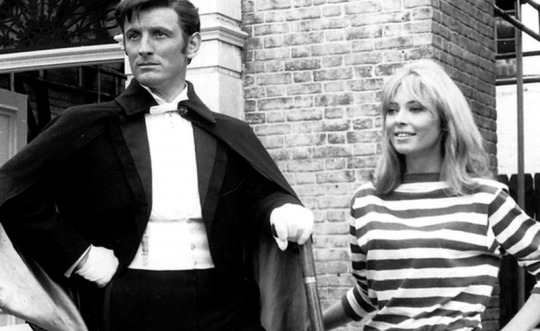
Adam Adamant Lives! - an Edwardian adventurer got frozen in a block of ice by his arch-nemesis The Face, thawed out in 1969, and now fights crime with a young woman sidekick and an actor-turned-butler who spouts limericks. It is a completely insane show and joyously dumb. Everyone involved is having a whale of a time. It’s hard to come by, but so worth watching it for the pure silliness.
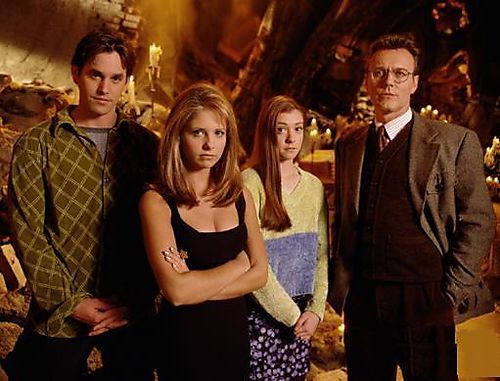
Buffy the Vampire Slayer - I can’t believe this has become a fandom some people haven’t heard of, but here we are, far enough out from the massive cultural impact of Buffy that I need to remind folks. 1990s series about a cheerleader-turned-vampire slayer, struggling with both the supernatural and with high school (which is much worse).
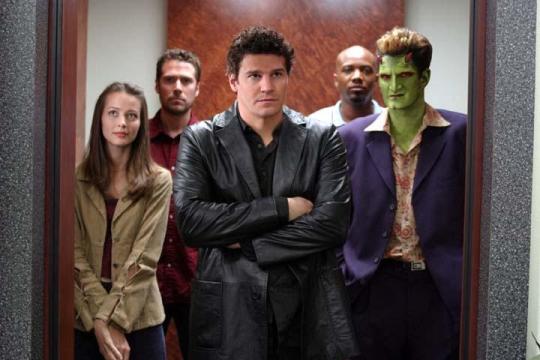
Angel - spinoff of Buffy, and in some ways my preferred series? It has so many problems, and the writing of seasons 3 and 4 is quite weak, but the characters are strong, the stories are solid, and Alexis Denisof’s Wesley Wyndam-Pryce remains one of my favorite character arcs in television.

Marble Hornets - here’s another fandom that doesn’t feel like it should be old, but it’s now over a decade since its premiere. One of the early webseries, Marble Hornets is still one of the best. Well done horror with occasionally iffy amateur acting, easily overcome with a surprising touch for cinematography. I’m a sucker for amateur film, especially when it’s well done and ambitious.
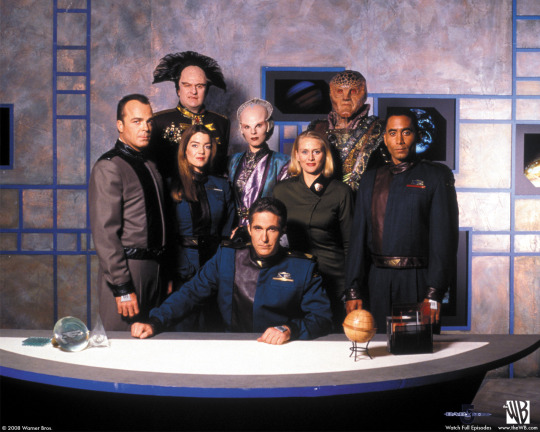
Babylon 5 - This was the first fandom I posted about on here, and still one of my great loves. Arcs before arcs on television were a thing. Huge overarching stories playing out over seasons. Great political intrigue on a space station. The grandest, most tragic Shakespearean romance that ever played out between two middle-aged alien diplomats.
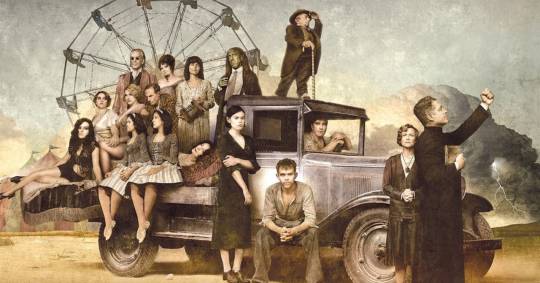
Carnivale - HBO prestige show before they had prestige shows. Bought the DVDs on the cover art alone, and they were so worth it: “1934. The Dustbowl. The last great age of magic.” Like most HBO shows, every possible content warning does probably apply to this show, though it’s not nearly as extreme as Game of Thrones, so if you could watch that, you can probably watch Carnivale.
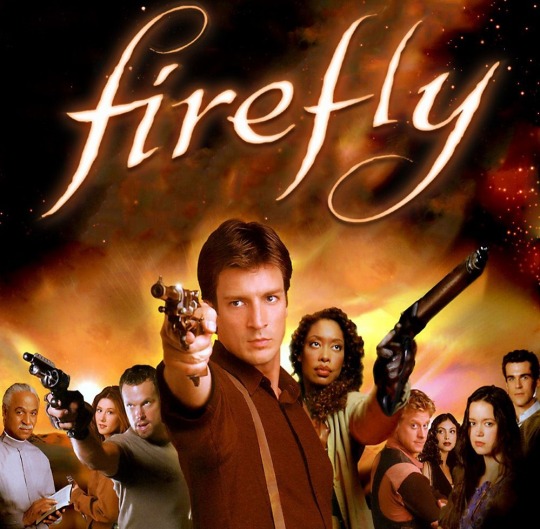
Firefly - space western courtesy of Joss Whedon. Only one series long, but really well done. Probably Whedon’s best work.
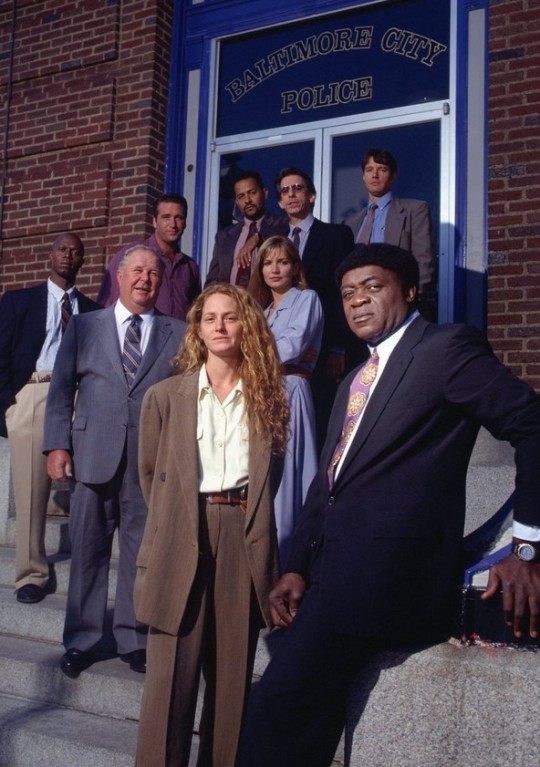
Homicide: Life on the Streets - early 1990s police procedural with a twist: it wanted to be a very accurate, realistic portrayal of a homicide unit, based on a documentary novel. The characters all feel real, you’re certain they all smell like cigarettes, coffee, and sweat. Also, can we applaud a show that has a female homicide detective who doesn’t wear makeup, has frizzy red hair, and never wears heels? Kay Howard is such a fantastic character. Frank Pembleton and Tim Bayliss and John Munch and Gee are all such wonderful, real characters. Another great show for prestige-television-before-it-existed.
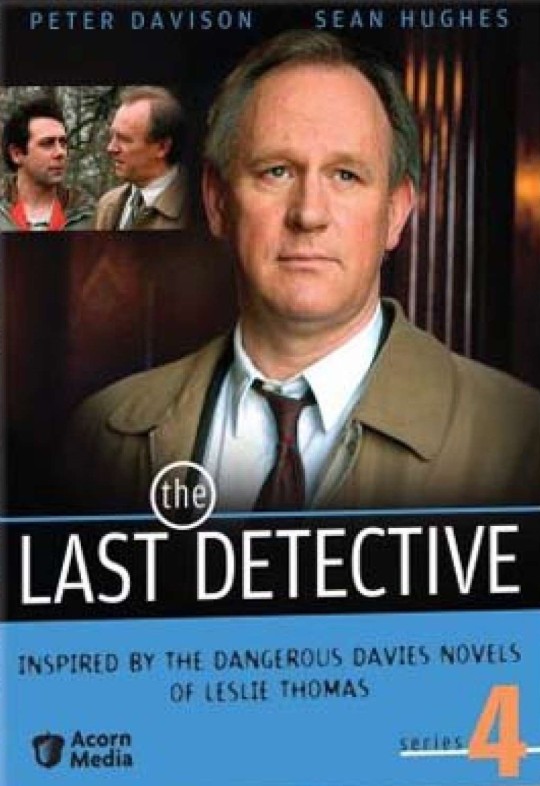
The Last Detective - British detective series about a detective who gets small, mournful cases ignored by everyone else and solves them mostly through dogged work rather than brilliance. This show is the most melancholy show I have ever seen, shockingly good in the quietest way possible, and remains one of my favorite detective series ever.

M*A*S*H - have you ever wanted a proper tragicomedy billed as a sitcom? There’s a reason this show is still considered the greatest sitcom ever made. Fair warning: the early seasons really haven’t aged well, and a lot of the comedy doesn’t land. But if you’re willing to stick with it to the later seasons, you’ll find a show that shifts toward one of the greatest tragicomedies ever.
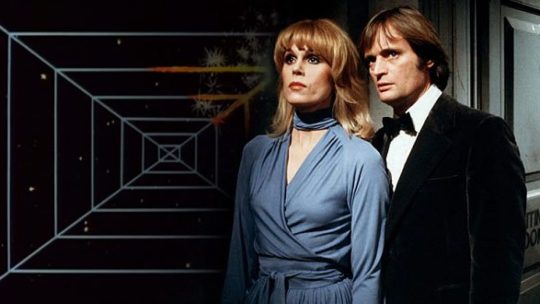
Sapphire and Steel - 1970s/1980s British horror/sci-fi show about two mysterious beings that appear to resolve science fiction reinterpretations of horror concepts. Despite a shoestring budget, the writing is phenomenal, and the acting is perfect, particularly the icy intimacy between the two leads, David McCallum and Joanna Lumley.
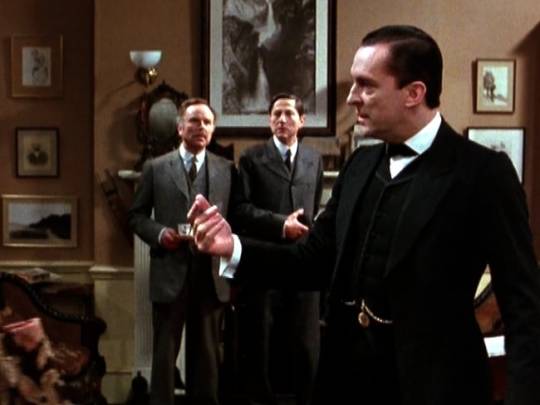
Sherlock Holmes - before the modern interpretations, there was the 1980s series starring Jeremy Brett. If you want the single most accurate interpretation of Conan Doyle’s work, with characters who feel and look like they’ve stepped off the page (and the series that singlehandedly rehabilitated the character of Inspector Lestrade), this series is a must-watch. This has been my go-to comfort viewing for years.
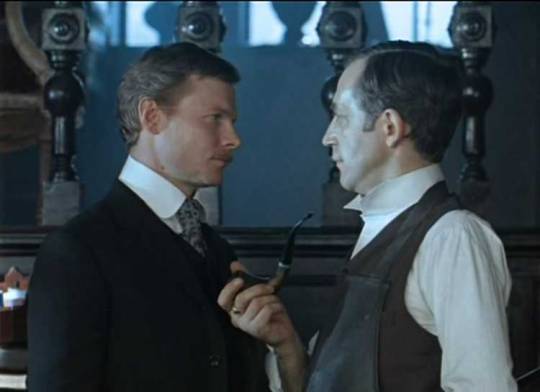
Also, if you’re a Sherlock Holmes nut, and you’re desperate for more content, and willing to navigate a Cyrillic DVD menu for subtitles, might I suggest the late 70s Russian Sherlock Holmes series? Vasiliy Livanov’s Holmes is such a different interpretation of the character, and he’s a delight. And Vitaliy Solomin’s Watson is possibly my favorite Watson ever. He’s so done with everything.
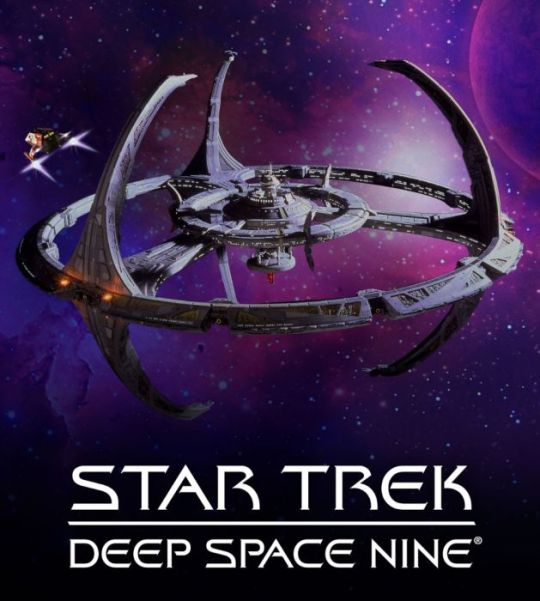
Star Trek: Deep Space Nine - sort of the forgotten middle child of the Star Trek series, but in many ways it’s one of the most ambitious. It was a rival/developed at the same time and somewhat by the same team as Babylon 5, so there are some striking similarities (space station, overarching stories, etc), but while B5 manages the political intrigue better, DS9 does a war better. It’s the darkest of the Star Trek series, investigating the more tarnished edges of the utopia. The characters are more deeply developed and flawed, and I love them all. Andrew Robinson’s portrayal of tailor-with-a-mysterious-past Garak is probably the best character Star Trek ever created in any series.
Hope those of you looking for new things to watch and dig into might find something in this list!
17 notes
·
View notes
Photo










I had a look at the homemade AI Upscale of DS9 and for the first couple of seasons....it’s barely noticeable.
To the left is the AI Upscale to 960p, and right one of the DVDRips floating out there.
The problem again is you’re just doing it from the DVD rips and not the actual film stock so the same weird video wash is present in both version. It’s the limit of the technology. It gets a bit better when DS9 changes cameras/lenses somewhere around season 3 or 4 (idk exactly where, I don’t feel like checking every ep in between rn) and the native image is a bit crisper to begin with.
but here’s a comparison for way of the Warrior:
upscale:

regular:

The AI also has trouble with certain lines (they wobble or look weird) in the SFX, especially the jem’hadar ships lighted undersides that are far away or in Apocalypse Rising a bottom left section of Ty’Gokor wobbles a lot.
It’s a valiant effort, especially for some eps that I had that had some choppy conversions to begin with (a rip of shattered mirror for example had choppy frames around some of the chases, the new one doesn’t). But it won’t replace an effort in-studio. just again a reminder of what TNG did:


#Star Trek#DS9#TNG#HD#AI Upscale vs In Studio#There's both having access to the original filmstock#and redoing effects#AI upscaling has a long way to go#again good on getting the image to stay the same clarity while getting it bigger#but the rest...
43 notes
·
View notes
Note
How do you stop being depressed?
Dear God, I wish I knew the answer to that one. I do know that given enough time each bout of depression passes. Sometimes fast; sometimes slow. It is what you do while you wait that makes the difference.
I do not have a story from my life to give you as an answer but here is everything I know about living with depression (in no particular order except item zero):
0. Depression is a liar
Depression tries to say things like, “this is never going to get better, I’m the only one, no one will understand, people will think I am weak…” Thoughts like these are lies depression tells you to keep you down.
Depression is a liar. Do not listen to it.
1. Talking helps
Being honest with friends and family you can trust makes the journey easier. You still have to go through it but know there are people that will listen makes it seem less difficult.
I thought I was the only one that felt the way I did. So I hid it. All through my teenage years, I kept my depression secret. It turned out though that my sister, my dad, and my uncle all faced similar demons.
2. Get rid of stressful people and drama queens
Boy or girl, drama queens just sap the strength you should use to face depression. While it might feel like doing the right thing to help everyone - you cannot save the drowning if you cannot swim yourself.
A few years ago (on Facebook) started using memes like the one below. The strange thing was the very needy people I was always ploughing all my mental energy into helping just went and found someone else to ask for help. They didn’t want my help, they were addicted to the attention I was giving out. Like vampires sucking my energy away.
For when you are once more stuck between two friends who have (once more) fallen out over something
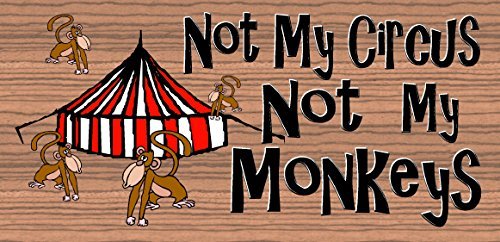
When they can’t get a hit of sympathy from me, they just go somewhere else and try again.
The result is, I feel healthier and less stressed. Depression is now a little easier to bet without that drag factor.
3. Deal with crap that is bothering you
Nothing powers up your depression like crap you need to deal with but are pretending is not there. Be it a relationship that has to end, a commitment you should withdraw from, a painful memory you need to grieve over, or whatever. Find a safe way to unpack that baggage and leave it behind you.
4. Sleep more
I cannot stress this enough - depression is worse when you are tired. Get a good nights rest. Take naps if you have to. Get good sleep.
5. Give yourself permission to take the day off
Some days I just say screw it to social media, party invites, and housework. I just sit around in my PJs and catch up on Netflix. Not because I am lazy (I am that too but this is not why) but because sometimes I just need to decompress and do something that makes me happy.
A day off for me means not looking at the news (Brexit worries me no end). I disconnect and just live in the moment (which means I watch Netflix or dip into my DVD collection). Sometimes I go out for food or a beer with a good friend.
There have been days where I get up with a low spoon count and no motivation. I take care of whatever will cause pain if not done now and then I chill and so serious amounts of nothing much. You’ll be surprised just how much can be rescheduled.
Of course, if you have a nine to five job, you cannot pull a sick day too often. For that, you will have to get your doctor to sign off on a few days to a week of recovery. Which means telling your doctor what is going on (also a great way to get support).
6. Talk to your doctor
Getting support from your doctor lightens the load. I never would have learned about mindful meditation had I not tried this.
7. People who say “why don’t you just cheer up”.
These people suck. There is not much you can do other than find better friends. They don’t understand and if re-educating them sounds like too much work, find friends that do understand. People who just don’t get it should be carefully managed and kept at a distance.
8. Advice on social media is far from perfect
Remember what I said about talking t your doctor? Doctors are experts. Tumblr users are… Who knows? We’re weirdos on the web. Sometimes we can help but do please double check with an actual expert.
9. Find someone else who is going through the same thing
Being able to explain what you are going through with someone who truly gets it - because they’ve been there - is wonderful. Just knowing you are not alone makes it easier. It beats the lies depression tells you by showing you the truth. That alone makes it all seem much less terrible.
On top of that, you can feel listened to and heard - boy does that help.
Furthermore, you can both share insights on ways to cope. Truly the best part of the deal.
10. It does get better.
Over time, depressions tricks just seem less effective. The cloud is just the same but I seem to be hurt a little less by it each year. The other benefit of getting older is that you can level up in kicking depression to the curb.
Depression still mounts some nasty attacks sometimes but it has never beaten me for good.
11. Get a cat or dog
This might be me but right now I have a soft warm cat (Molly) laying on me and I feel just a little bit better because of it.

12. Socialising can help
I’m an introvert but I found that my DnD and Pathfinder games lift my spirits. I’m pretty sure it is the socialisation and not the dragon-slaying that helps.
That said slaying dragons with a group of people you see every week is most satisfying. Try that too. Seriously, tabletop RPGs are the best.
13. Did I mention how helpful sleep is?
Sometimes a power nap can hot reset on strong or overwhelming feelings. It can just be the case that allowing yourself a short cry and then a nap, lets you get back to your day. That works for me.
14. Music
I have playlists that I use that can help a lot.
Some are full of songs that recognise negative feelings, pain, and suffering. I find them cathartic.
Others remind me of times I have had a lot of joy. A surprising number of those are themes from favourite shows.
I’ve no idea if this will work for you but try it out if you get a chance and see if it works for you. Sometimes a good playlist can kick depression right in its stupid face.

15. Rewatch favourite shows
I read somewhere that when we watch shows we are familiar with we enjoy them differently. The stress and release of finding out what will happen are replaced with something similar to the feeling of seeing a treasured friend. Maybe it is just me, but I have some shows I have seen certain seasons of many times.
Some shows (Red Dwarf, Bleach, iZombie, Star Trek DS9, etc.) have episodes that I can quote line for line.
16. Look after your health
Take care of yourself. Show your own self some love and care. I’m not really sure why this helps but it does. Pain, sickness, and generally being run down make coping with depression harder. I guess that I do have a clue about that after all.
Some people find yoga helps. When my body was younger, I liked running. I can’t run now do to an arthritic bad spine and I miss it.
17. Nice food
Talking of showing yourself some love. Treat yourself to something nice once ins a while. For me, that is pizza, bacon and eggs, or chocolate ice cream. Man, that is the way to say “I love you” to me.
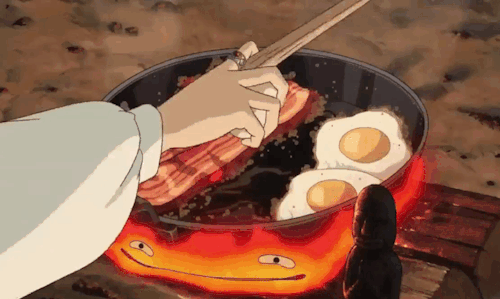
I would not be surprised if Bacon might one day turn out to have magic properties from which we will develop a cure for depression. Even if it does not - bacon is still awesome.
Except for pizza. For some reason, they always put really dry tasteless bacon on pizza where I live.
18. If it gets too much tell someone
When depression is loudest, never try to ride it out without telling someone. Tumblr does not count.
19. Never drink depressed
Booze is not the answer. For that reason, when depression is very bad I drink nothing stronger than a tea or coffee. Trust me on this one.
20. It is okay to sometimes be not okay
Give yourself permission to feel low. Don’t hide it but don’t let yourself get dragged down by it either.
21. It is not okay to stay not okay
If the depression spell lasts without relenting, seek help. That’s bad and you deserve the best support there is available to you. It can often be the last thing you feel like doing but after a week or two of feeling low and staying home, something more serious may be wrong and you must get help. You deserve to be happy sometimes too.
22. Enjoy the little victories
Take time to really bask in the glow of the smaller wins. I find that gives me the strength to go and get the next win.
23. Your job is NOT to make other people happy
On no account is it ever okay for anyone to make you feel that their happiness is your responsibility. File people like that with the drama queens - in the past.
Trying to conform to the expectations of others is the leading cause of making depression worse than it needs to be. A close second is trying to please everyone. I have no data at all to back that up with but I am pretty sure it is true.
24. Surround yourself with people that know the real you and still like you
Everyone else can stick it where the sun never shines. Seriously, people that know and like the real you are worth their weight in gold. Everyone else... Not so much.
25. It is okay not have the answers
I am 100% sure there is more stuff I know and cannot think of and 100% sure that there is a lot I don’t know and probably should. I’m still learning too.
1 note
·
View note
Video
youtube
I recently discovered @The Orville. I love it and think it’s better than modern Star Trek, such as Discovery and Picard. In this video, I’m going to give you 5 reasons why it's so much better. The Orville on DVD: https://ift.tt/2ZxAN6q Patreon: https://ift.tt/3dJ7Ati 1. Aesthetics.The ship, inside and out, is very reminiscent of Star Trek TNG and VOY. The light-bluish gray ship’s hull and saucer shape. The interior is extremely similar too. A kind of 80’s minimalist styling which you could quite easily believe is just a reimagining of Star Trek. The uniforms, weapons and technology are all subtle redevelopments of the versions in Star Trek. By contrast, both Discovery and Picard fail to recapture the original essence of Star Trek and either make things generically futuristic or very industrial and functional. 2. Cameras. Ever since JJ Abrams relaunched Star Trek in 2009, we’ve been suffering lens flares, jaunty camera angles and fast moving action shots. A long way from Kirk battling the laughable Gorn in TOS. It’s a stylistic gimmick which doesn’t fit with a serious science fiction series. The Orville returns to action packed tension and superb CGI, essentially bring TNG up to date, without inducing motion sickness. 3. Characters. Discovery is more about sassy empowered characters trying to educate the audience about race, gender and sexuality, rather than actual personality and character development. As a long term Star Trek fan, it’s also a bit annoying that they pretend that Star Trek has never tackled these issued before.The very foundation of Star Trek the Original Series was a hugely diverse bridge crew of men and women, every different race, colour and species. Star Trek Voyager had a strong and interesting female lead character long before Discovery tried and failed to deliver one. The Orville pays an obvious homage to TNG with a huge range of characters, such as Bortis, a character will more than a passing resemblance to a Kingon, and Isaac, an artificially intelligent lifeform who doesn’t understand humour. But it also pushes the frontiers with characters like Alara, a female security officer with super-human strength. You warm to these characters and are interested to see what happens to them over the course of the season. 4. You may be shocked to find several star trek actor cameos in the Orville, including Robert Picado and Marina Sirtis, helping to give the Orville a familiar feeling and a kind of knowing nod from the Star Trek universe. Picard also pulls this off to some extent with Sirtis and Frakes, and I don’t mind Picard as much as DIS, but somehow the cameos in Orville are more acceptable and fitting. Why? Seth Farlane is a massive Star Trek fan, and even appeared in an episode of Star Trek Enterprise, and there are pictures of a young Seth in a fan made star trek episode. It is clear that Seth loves Star Trek, and the Orville is his dream to bring back classic Trek and to Captain a starship for himself. 5. The stories. New Star Trek has adopted a new mode of storytelling not previously used in the franchise. The narrative is spread across the entire season, rather than self-contained episodes as in TNG and VOY. Yes, VOY had it’s overarching journey home and DS9 had the dominion war, but DIS requires you to watch the whole season with an eidetic memory . Unlike Breaking Bad, which gets away with this style of storytelling, DIS fails spectacularly. They seem to think that complexity and the continual subversion of your expectations will make it compelling to watch. Personally, I find it tiring and uninteresting. The Orville reverts to old-school self-contained episodes; The ship encounters an enemy, or goes to a planet, or has a crisis on board. You witness the characters journey through a hardship, and finally your expectations are subverted in a single, bold and obvious way. The payoff is far more rewarding and should be very familiar to fans of TNG and VOY. Lastly, if you don’t like an episode, you’re not buggered for the entire season. Light Awash by Kevin MacLeod is licensed under a Creative Commons Attribution licence (https://ift.tt/1bFo3O7) Source: https://ift.tt/2cOXCdV Artist: http://incompetech.com/ #TheOrville #StarTrek #Top5 by Dr Jake's Very British Reviews
0 notes
Text
The Orville season 1 - that’s a wrap

Last night the 12th and final episode of The Orville’s first season aired in North America. There were supposed to be 13 episodes, but in a decision that parallels both Voyager’s first year and, oddly, Tom Baker’s first season on Doctor Who, the powers that be have chosen to hold one episode over for the next season. That doesn’t mean the season just ends; apparently the held-over episode is an earlier one, so last night’s episode does feel like a season finale.
I haven’t had a chance to write about recent episodes, but with the show soon to debut in the UK (Dec. 14), I thought I’d look back with some thoughts on the first season. I’m going to keep this spoiler-free for those in the UK who might still be curious about whether to give Seth MacFarlane’s science fiction dramedy a try. I’ll put a break in here first though since this might be a bit wordy. The tl;dr is the 12 episodes of The Orville S1 were not only stronger than the first season of any Trek series other than TOS, taken as a whole, but were to me more satisfying than any other science fiction series I saw in 2017 - and yes, that includes Doctor Who.
Of course The Orville wasn’t perfect. Like the franchise it took its inspiration from, there are plotlines and dialogue and directoral choices that are hit and miss. At the same time, though, the show took some brave choices. Having an episode based around the topic of sexual consent is always going to be a risk, but having it air (coincidentally) only a couple of weeks after the Harvey Weinstein floodgates opened, even more so. We’ve also seen episodes addressing social media, transgender issues and organized religion. It’s taken stands on some topics, stayed neutral on others, and has always sparked conversation that continued after the credits rolled.
In other words, it does what Star Trek used to do on a regular basis. But with touches of Twilight Zone and Black Mirror tossed in from time to time.
This was also a show that has more heart in it than nearly any other SF series on the air. Not everything is goodness and light. People die. People make mistakes. Bad mistakes. The captain is not immune to this. And - and this is one of The Orville’s strengths - people learn and evolve. There is little of this “character reset” that plagued the episodic format. In the show’s early episodes you could well find yourself rolling your eyes at one character’s behaviour in one episode ... only to discover there’s a payoff to this later in the season. It’s actually a bit of a fallacy to say this show is purely episodic with no arcs; there are arcs, they just aren’t in our face about it. The rewards are there for people who pay attention, but if you miss an episode, with a couple minor exceptions, you can catch it up later without losing your place in the story.
A lot has been made about comparing this show to Star Trek Discovery, with many Trek fans saying Orville is more like true Trek than Discovery. And I have to agree. Discovery, after it got past a rather long period of growing pains, got a lot better and more Trek-like towards the end of the first half of its season - I am not a Discovery-hater. That said, it’s not so much the storyline that’s been a disappointment, it’s been the characters. For me, and many others, the characters on Discovery took a long time to gel, both as a team and as characters we care about - perhaps too long, with a lot of folks indicating they jumped ship after only 3 or 4 episodes because of it. The Orville managed to have its characters gel and establish them as people we care about pretty much by the end of the first episode, or Episode 2. Discovery is right now just about a crew (with a focus on one character). The Orville is about a family (with no character the exclusive focus, not even Seth MacFarlane’s Capt. Ed Mercer). As such maybe we should stop comparing Orville to Discovery and start comparing it to another show about a misfit crew that became a family: Guardians of the Galaxy.
At the same time, The Orville has impressed a lot of people by featuring actual honest-to-god science fiction concepts. 2-D space, alternate dimensions - you can tell that Seth took notes from when he spearheaded and produced Neil DeGrasse Tyson’s sequel to Carl Sagan’s Cosmos a few years back. And there aren’t that many comedy series that have a scientific advisor. Or who boast a number of Star Trek veterans behind the scenes. The special effects are excellent, and the Orville ship itself just looks cool, from the spiral staircases used in lieu of turbolifts in some parts, to the mess hall that - I’m not making this up - appears to have been furnished by Ikea (in fact I’m pretty sure I’ve seen the tables there). It could have looked silly - but instead it makes the ship feel more like a “real” place.
Bottom line: The Orville has funny moments, but it is not a comedy. In fact, there are more moments of attempted humour in TNG episodes than there are in Orville episodes, and the humour in the Orville feels more natural, with the occasional exception (and not every joke will appeal to every viewer). The term to use is dramedy - a dramatic comedy. The Orville can get dark at times; the season finale has one of the most disturbing scenes I have ever seen on a network TV show - not even Game of Thrones has done this. The episode “Krill” tackles the issue of morality in combat head-on. Many people are comparing The Orville to the classic dramedy series M*A*S*H. And I agree with the comparison. When M*A*S*H was funny, it was funny... until it was time not to be funny anymore. The episode “Firestorm”, in which Security Chief Alara Kitan has a crisis of conscience after an unexpected fear reaction results in her being unable to save a man’s life, pretty much just has two funny moments. The rest of the time, it’s as dark as episodes go. “Krill” has a telling moment where Gordon Molloy, the ship’s practical joker, goes from making gags about a person’s name to somberly noting that in order to complete a mission, a lot of people have to die. This in an episode that gave us a more in-depth and fulsome overview of the culture of The Orville’s resident “enemy” alien race than the Klingon-heavy Discovery managed in six episodes.
We actually care about these characters. We want to see how single mom Dr. Claire Finn and her sons fare aboard the Orville (Claire is played by former DS9 and 24 co-start Penny Johnson Jerald, who gives some of the show’s best performances). Bortus and Clyden, the loving couple from a (supposedly) all-male species, have one of the most natural-looking relationships on TV, even with the alien make-up. John Lamarr’s character arc is legitimately unexpected (and you gotta love the fact that actor J Lee is getting his big break with this show after working behind the scenes in Seth’s office for a few years). Kelly Grayson (played by Friday Night Lights and Agents of SHIELD alumna Adrienne Palicki) and her ex-husband Capt. Ed Mercer (MacFarlane) have a very mature relationship, with both giving excellent performances - MacFarlane himself will surprise those who only know his vocal work and role in A Million Ways to Die in the West; he is amazing in “Krill”. Isaac, the show’s version of Data, has one of the coolest characters on TV and undergoes real growth. Gordon is a jokester with unexpected depths. Alara is physically the strongest person on the ship, but because she is so young (and looked down upon by her parents) we want to see her succeed even more. Hell, even Norm MacDonald’s Yaphit, an intelligent CG-animated pile of goo, goes from being a gag background character to an interesting, full-bodied individual as the season goes along. Without spoiling, a number of bad things happen to him in one episode and he gets rightfully pissed off as a result - and you end up agreeing with his view. This is a pile of goo with a mouth.
The Orville is a show that I think will work great for binge-watching. The Pilot - which is a much better episode than the professional reviews suggest - is rough in places. But it’s also fun and a strong start (I am glad they revised Alara’s make-up, though, in an unintentional parallel to what happened with Leonard Nimoy’s Spock between Trek’s pilots and TOS proper). And then we go into the second episode, “Command Performance”, which focuses on what has become the show’s breakout character, Alara (played by Halston Sage), which combines another crisis of confidence story line - the episode is in some ways a companion piece to “Firestorm” - with a b-plot storyline that could have been written by Rod Serling (the resolution of the b-plot of “Command Performance” is exactly the type of thing Serling would have done in TZ). The fact most of the episodes were written by MacFarlane and his Family Guy co-writer, Cherry Chevapravatdumrong, suggests these two might have found their true calling. Cherry in particular does an amazing job; I hope she writes more S2 episodes and I’d love to see both her and MacFarlane tackle an Orville novel down the line.
Best of all is the fact The Orville was swiftly renewed for a second season. This means if you’re seeing it for the first time, either on UK TV or the DVD release in January or on streaming, it’s not going to be a case of history repeating itself and the show being one and done. Fox notoriously cancelled Firefly after only a dozen episodes. I personally am not a fan of Firefly, but I respect the fact a lot of people loved it. Ironically, Firefly came out during Star Trek Enterprise’s run, and a lot of people embraced it because it scratched the itch Enterprise didn’t. Orville is that to a lot of viewers who don’t like Discovery’s dark and bloody take on Trek (it’s ironic there’s talk now of doing an R-rating Trek movie directed by Tarantino; someone didn’t get the memo it seems). Fortunately - and let’s hear it for Seth MacFarlane’s pull at the network - Fox is giving the show a chance to grow and develop for a second year.
If S2 is as strong as S1, we’re seeing a classic series appearing before our eyes. Not bad for a guy who not long ago built an episode of Family Guy around the lead characters having an ipecac-drinking contest and see who’d barf first.
1 note
·
View note
Text
It’s hard for me to recognise that Star Trek Deep Space Nine is over 26 years old. I first watched this series on BBC2 in the 90s when they had the rights to air it, not long after that I was consuming the VHS tapes as my hunger for the show grew. Actually; I can feel that passing of time now when I think about it . . . . . It’s basically a lifetime ago. What a world we lived in back then, when entertainment wasn’t just a click away, look how spoilt we have become, I find it tiresome to put a DVD in the player these days. That click away is a very good reason that I have been less than productive over the last few weeks! I’ve been knee-deep in Galactic disputes, Jambalaya and Orbs. Yes, welcome to the wonderful world of binge-watching. Thanks to Netflix, I no longer have to wait for an episode anymore, even better for me is the “Skip Intro” button, just pour that sweet Ketracel-white into my veins. You know what I have learnt whilst watching this series in its entirety, it’s amazing and would say at this moment in time could be my new favourite series in the franchise. Strong words for someone who has watched The Next Generation as much as me. Funny thing is, I’m not alone as Deep Space Nine is having a real resurgence in the zeitgeist. The Member Berries are strong with this one. Anyway, this is isn’t gonna be a deep kick in the history of DS9 but me picking out my favourite episode from each season. I just thought I best make some use of those hours I lost in the abyss of a streaming app, don’t get me wrong, it was bloody glorious. Enough of the small talk, let’s get started.

Season 1. Captive Pursuit, January 31st, 1993.
Chief Miles O’Brien Colm Meaney what a character and what an episode. As much as I enjoyed the first season of Deep Space Nine it felt like it was still in its infancy stage but this episode hit the ground running. The humanity of Miles is so well written in this episode as he builds a relationship with a Gamma Quadrant alien called Tosk who is one of the best alien costumes in the entire series in my opinion. Tosk says his ship was damaged in the wormhole but was damaged by laser fire and then the mystery begins. Later we learn that Tosk is nothing more than prey for the Hunters, unable to let the prime directive decide Tosk’s future Mile’s does what he knows is right and helps his friend escape. This is pure Star Trek in its element and Tosk is by far one of my favourite characters of the franchise, I just wish we would have seen more of him.
Season 2. Paradise, February 13th. 1994.
Captain Sisko Avery Brooks and Mile O’Brien locate an M-Class Planet and decide to investigate it further. A colony that once belonged to Starfleet has been living there for ten years, creating a utopian, paradise after they ship they had crashed, stranding them. Turning there back on the technology available to them, the camp opts out for a simpler and more rewarding way of life, that is until someone becomes ill and has to suffer; regardless of using medical science to cure her. As captain Sisko becomes more alarmed by Alixus’s way of running the colony, she becomes more annoyed with his reluctance to conform to the rules. Later Sisko is put into a metal crate as punishment, leaving Miles to work out that Alixus had actually planned the crash on the planet and has kept them there since. Paradise soon begins to unravel and eventually Alixus is forced to pay for her crimes. Funny thing is, most of the colony decide to stay on the planet. Great episode as we much the captain grows into his role, at this point in the series you can really understand how determined and passionate he is about injustice and freedom.
Season 3. Past Tense: Part 1, January 2nd 1995. Past Tense: Part 2, January 9th 1995.
A time travel episode that takes us back to San Fransico 2024. I really struggled to come up with anything I really liked from season three, to be honest, this is definetly the worst season from the series. This double bill certainly did take me back to the ’90s though. I think the moral of the story is meant to be something more meaningful but this is just a comedy episode for me. First, is Jadzia Dax! Why is she wearing something Sherlock Holmes would suit better? Next, we have the doom and gloom of the Sanctuary District, every extra in the scene is walking with there heads down and looking gloomy, it was hilarious. Nothing can compete with Miles and Kira energising into different parts of San Fransico’s timeline, the hippy scene was just car-crash television on the highest scale, wonderful! The positive again is Avery Brook’s as he takes part in the Bell Riots, he really does stand out from the rest of the cast in this episode as he falls into the role of Gabriel Bell.

Season 4. Hard Time, 15th April 1996.
I guess I really do like the character of Cheif Miles O’Brien as this stand-alone episode features the darts playing engineer again. Saying that though, this is such a well-written episode that any of the characters could have carried the story. Miles finds himself locked in a cell and is released after twenty years of confinement. Luckily for him, its only been a matter of hours as those memories of his imprisonment are artificial and he can go back to his normal life once again, or can he? The Cheif suffers flashbacks back on the station, which eventually spills over in his real life as he lashes out at daughter Molly and assaults Quark. Miles is placed on medical leave but is constantly visited by former cellmate Ee’char. Miles sees no way out from this nightmare and finding a weapons locker pulls out a phaser and sets it maximum, until his friend Julian arrives. It seems Miles is feeling guilty as he killed Ee’char over a few pieces of bread that hill cellmate was saving for both of them, Julian manages to talk Miles down and explains that he isn’t an animal and can get help to move on with his life. As Miles gives in to what has happened, Ee’char slowly disappears from his mind.

Season 4. Trails and Tribble-ations, 4th November 1996.
Another time travel episode but the difference between this episode and Past Tense is a huge leap forward in terms of quality for Deep Space Nine. The Department of Temporal Investigations visit the station and they want answers! The one thing I like about this series is that it manages to be a serious and somewhat heavy show and still manage to have little moments of fun in between, this episode is somewhat on the lighter side, even though the plot could have devastating results. Basically, the plot is pretty simple as the crew pick up the Orb of Time and a hitchhiker, Arne Darvin. During the trip back to the station, the crew find out they have been transported back 200 light years back to original Enterprise, the one featuring Kirk, Spock and the rest of the crew. Sisko and his crew must do everything they can to stop Arne changing the timeline, in which Captain Kirk had disgraced the agent before. The enjoyment in this episode comes more from watching the Deep Space Nine crew integrate with the Enterprise crew so easily, it really is a very technical episode and somehow they pulled it off superbly. The crew end up in a punch up with Scotty, who they mistake for Kirk starting out and it’s fascinating and funny. There are so many special touches in this episode that are worth writing about but I would be here all day. My favourite moments are Captain Sisko visiting Kirk on the bridge and eventually the promenade been overrun by Tribbles. Great episode, and one you can keep rewatching it without becoming bored.
Season 6. One Little Ship, 18th February 1998.
This is a little summary for an episode I really enjoyed. A runabout shrinks in size as they enter an anomaly, the only problem is the Defiant is attacked by the Jem’Hadar at the same time. The U.S.S Rubicon runabout must enter the Defiant and help the crew take the ship back. I’m a huge fan of the series, Land of the Giants and this episode made me realise just how much. There is nothing new here but its a really fun and enjoyable episode.

Shadows and Symbols, Image in the Sand and Far Beyond the Stars. 7th October 1998.
Okay, I cheated a little, but I actually think this trio of episodes belong together and is by far one of the reasons I love Deep Space Nine and definitely confirms to me that this series is by far the most ambitious of all the Treks we have had before, or after. I mentioned earlier that I had bought the VHS of this series and Far Beyond the Stars was the reason why! Back then I got my information by a magazine and had seen some photos from this episode and was blown away. When I finally watched the episode, I was not disappointed and think its best and most powerful bit of television I have ever watched. Avery Brook’s is a great actor and I think it was only fitting he could get his acting chops around a story that is as powerful as this, his portrayal of Benny Russell is a thing of beauty. Benny Russell is a 50s science-fiction writer who writes a story about a black man commands a space station and can’t let the story go, regardless of the prejudice he comes up against. Benny works for the magazine Incredible Tales, and in this 1950s scenario, all the characters from Deep Space Nine are all there taking up some amazing roles. I really don’t think I have the writing skills to do this storyline justice enough, all I can say is that its a really important part of storytelling in today’s society. I also really love how Benny comes back and plays an important role in Sisko’s journey with the prophets. I just love everything about it. One picture that always catches my imagination is the picture of the space station for the magazine.
I enjoyed going back to this series quite a lot and Deep Space Nine is definitely back in the headlines again with the release of What We Left Behind and I can’t wait to watch it. I even hear that some of the writers for the show outline what an episode of series 8 would look like on screen. I also realise that movies, tv shows and other forms of media can change through time and becomes something much bigger and this series is becoming that right now and that can only be a good thing. Could we ever see a new series of DS9, I very much doubt it, but I can always dream. Anyway, what are your favourite episodes from Deep Space Nine? I would love to hear them?

youtube
�� It’s hard for me to recognise that Star Trek Deep Space Nine is over 26 years old.
0 notes
Text
What No Man Has Seen Before: Remastering Deep Space Nine to Maximum Quality
I’m done.
Most stories don’t begin at the ending, but that’s the only place to start this one. I’ve been working to remaster Deep Space Nine for the past nine months, ever since AI-based video upscaling software began to hit the market. After I saw how much improvement could be wrung out of some old MKVs, I decided I’d start over, using the original, superior, Deep Space Nine DVD source. Nine months later, I’ve accomplished what I set out to do: Create a method of remastering and upscaling Deep Space Nine that didn’t rely on hand-combing episodes to fine-tune deinterlacing algorithms while compromising on image quality to the smallest extent reasonably possible. I’ll be demonstrating the results all throughout this article.
I have created a 23.976 progressive version of Deep Space Nine, codenamed Rio Grande. While I have not yet checked the method against the entire show, it worked well on test episodes from S2, S4, S5, and S6. Special thanks to Cyril Niderprim, who found the hilariously simple solution below, and a pox on the small mountain of more complicated scripts I’d written. While Rio Grande is capable of throwing errors — I have included an example of such — there’s an alternative if it tangles up an episode in a way you don’t like.
I have also achieved an identical-quality 59.94 fps conversion, codenamed Orinoco. Orinoco preserves motion correctly in all scenes and is included here as an insurance policy. While it matches Rio Grande on quality, it packs 2.5x the frames and takes 2.5x as long to process and upscale. Rio Grande should work — but if it doesn’t, Orinoco will. If either of these methods proves insufficient to deal with an episode, we’ll come up with a custom way of handling it and I’ll wind up writing something about it and/or updating this article to keep track of special cases.
I’ve done a couple renders of the credits to showcase two different AI upscaling models Topaz offers: Theia Detail (at default settings) and Gaia-CG. Gaia-CG is below:
youtube
This article is not a step-by-step tutorial on how to perform this process suitable for literally anyone to follow. That will be its own project. I will, however, provide enough information that anyone with a passing knowledge of AviSynth should be able to recreate both approaches.
Theia-Detail credits below:
youtube
There’s a missing bit of frame for several seconds when the Bajoran freighter is panning around the station. This is a unique error — I’ve never seen it anywhere else on the show — and it pops up a lot, nearly regardless of what filters you use to adjust an episode. It’s always unique to the credits; you don’t need to worry about random blocks of content missing from the sides of your video.
Maximum Warp
Rio Grande and Orinoco make as few compromises on image quality as is reasonably possible. Every aspect of this process is designed to preserve detail at the deliberate cost of hard drive space until the final encode, at which point you can be as lossy as you like.
All of the clips you’ll see below were encoded in 0.0 H.264 until losslessly upscaled frame-by-frame. I encoded these clips in H.265 at a CRF of 6, which turned out to be ludicrous overkill. Live and learn. There’s a freeze-frame, just-noticeable quality difference between CRF 14 and CRF 20, while 25 is pretty ugly.
Upscaler Models: Avoid Artemis, 200 Percent Upscales
I’ve encoded at least one example of every upscaler mode Topaz offers except for Artemis-LQ and Artemis-HQ. These algorithms are completely unsuited to Deep Space Nine, and while they no longer produce literal garbage output when run against the show, they do not react well to its content. Consider them fundamentally unsuited to the task. I don’t care for Gaia-HQ’s output against DS9 very much, though I included one example below. That leaves the two Theia models and Gaia-CG.
I’ve always preferred Gaia-CG, so that’s what the majority of the encodes are in, though I’ve also showcased the Theia algorithm family. The Theia models offer tunable parameters for noise, sharpness, and detail recovery, and these can be very useful if you’re attempting to denoise an ugly patch of wall or carpet.
The 200 percent upscale option should be avoided. It creates errors that were not originally present in the source in some cases and it offers meaningfully reduced image quality compared to the 400 percent version. Be advised that the repair process has a habit of creating a seam down the left or right side of the image frame — you can crop it out with no trouble, but it’s something to be considered.
Topaz offers the option to upscale losslessly by image or via lossy MP4. All of the upscale videos you’ll see here are lossless PNG conversions.
How Much Additional Detail Did I Recover?
The idea that sent me haring off on this mad quest was that I could extract additional visual data if I returned to the source DVD rather than relying on old backup files. Here’s an example of my best upscale in January:
That was then.
While some of these improvements come from low-level improvements to the AI upscalers themselves, the upscaler has to be able to lock on to enough information to upscale an image without making hash of it. Imagine a screenshot where everything was rendered at DVD resolution except for Odo’s hair, which was done in 4K. It would look odd, to say the least. The more detailer the upscaler can get its hands on, the better the chance it creates something gorgeous on the back end. Going back to the DVDs gave the upscaler more to work with in the final process.
This is now.
As a reminder of how far we’ve come: The following three screenshots are the Defiant as it appears on the native DVD, the best upscale result I could achieve in early February, and my current best result today:
The Defiant in all her DVD glory. At least it beats Netflix. Let’s see what we can do.
February, 2020: It’s a big improvement, but I believed better was possible.
That’s more like it. Image from Orinoco encode.
Here’s my favorite Defiant shot from the entire show. I was really proud of how this turned out in April. It’s still quite nice.
I still like the way this came out, but it’s not the best we can do.
This is one place where I’m obviously getting help from a tweaked AI upscaler model. Better processing might clean up the model a bit differently, but some of the features on the hull are slightly different shapes. This image benefits from a side-by-side comparison to the other at maximum resolution.
The gains are real. Every time I compare an upscale based on the old MKV files I’d created years ago against the benefit of going back to the DVD, the DVD wins. If you want the best version of Deep Space Nine, invest in the DVD set.
So How Good is It?
With careful processing and good upscaling, it’s possible to give Deep Space Nine a clarity that I think approaches that of what’s typically referred to as “HD” content, though it’s still limited to the NTSC color gamut as opposed to later standards like Rec. 709. At its worst — allowing for some deviations from perfection — it’ll still look like the best damn DVD you’ve ever seen. At its best — and I consider the shot of Sisko up there to be one of the best — I’d argue that he, at least, comes across in HD levels of detail.
The processing steps I’ve used repair some baked-in damage to the source, but not all of it. There’s a frame sequence in “The Way of the Warrior” that literally looks as though something was spilled on the film, and that’s not something I know how to fix. All of the encodes below are from Rio Grande.
Way of the Warrior: It’s No Illusion
“The Way of the Warrior” contains two of the best battle scenes of Season 4. In the first, Sisko takes the Defiant to rescue a Cardassian ship under heavy fire from the Klingons. You can see the VFX team experimenting with what amounts to an over-shoulder kill cam — not exactly the kind of thing Next Generation was known for. It’s obvious the VFX teams had a lot of fun with the Defiant.
youtube
The second major battle scene of the episode is below. There’s an excellent callback to an event from the show’s pilot, when Kira attempts to bluff a squadron of Cardassian warships into believing the station is far better armed than it actually is.
This time around, things go differently. Upscaled in Theia Fidelity first, at default settings, followed by Gaia-CG. Gaia-CG is what I’ve used for screenshots in the past:
youtube
I’ve included clips of normal human interaction in this article specifically to illustrate that these processing techniques don’t just work on starships and battle scenes. Deep Space Nine is about far more than just CGI combat — it just happens to have some really great examples of the latter, particularly by late-90s standards. Gaia-CG below:
youtube
Paradise Lost
The Defiant takes on the Lakota in this battle scene. Elements of Starfleet were in the process of slow-walking a coup attempt. This clip deliberately shows what happens when Rio Grande doesn’t get a scene entirely right. While this shot mostly works, it’s noticeably jerky at the end. I’ve confirmed that this only affects Rio Grande — Orinoco plays back perfectly smoothly in this situation. If the small amount of jerk doesn’t bother you, Rio Grande is your oyster. If it does, try Orinoco.
youtube
Far Beyond the Stars
One of the benefits of science fiction is that it allows creators to play fast and loose with the question of time travel. Here, Benjamin Sisko is flung back into the 1950s — at least, in his own mind — and finds himself face to face with the ugly racial politics of the era. Upscaled in Gaia-CG:
youtube
In the Pale Moonlight
The greatest episode of Deep Space Nine concludes with a chilling soliloquy. Upscaled in Gaia-CG:
youtube
The same scene, rendered in Theia Detail at 10 percent sharpening, 20 percent noise reduction, and 20 percent detail recovery.
youtube
Sacrifice of Angels
Y’all knew we’d be back to this episode, right? In First Fleet (below, rendered in Gaia-CG), the Federation closes to battle with the advance forces of the Cardassian / Dominion military. I quite like the Galaxy-class maneuvers that bookend the clip. The Galaxy-class often looked fat and ungainly from certain angles, while others showed it to great effect. It gets more of the latter and less of the former on DS9 than it did on TNG.
youtube
This initial engagement doesn’t provide the opening the Defiant needs in and of itself. Starfleet decides to try and force a breach through enemy lines, even though they’re outnumbered, 2:1. This is the scene I chose to render in a number of different ways. First, Gaia-CG:
youtube
Next, here’s Gaia-CG at CRF=20. The quality loss is modest here, but I don’t recommend going much higher. The problem with starting from DVD source is that there’s not a lot of detail to lose before quality starts suffering, and the interpolated/upscaled information is only just so good to start with. When you start pushing the quality downwards past a certain point, it drops like a rock. CRF=25 is way too high. I wouldn’t go lower than 20.
youtube
Gaia-HQ:
youtube
Theia Detail, default settings:
youtube
And finally, Theia Fidelity, at 20 percent sharpness, 30 percent detail recovery, and 20 percent noise reduction settings:
youtube
Although I’ve chosen to focus on the later seasons of the show, this encoding and upscaling method works on the early seasons, too. Just keep in mind that the actual source material for the early seasons isn’t as good as what we got in later years.
That concludes the demonstration portion of today’s program. Now, let’s talk about implementation.
How to Encode Rio Grande
To encode using Rio Grande, rip the DVD using DVD Decrypter and generate a D2V index file using DGIndex or an equivalent tool of your choice. Next, fire up whatever AviSynth front-end you use, if you use one at all. I use StaxRip, personally.
The AviSynth script is as follows:
TFM() TDecimate() QTGMC2 = QTGMC(Preset=”Very Slow”, SourceMatch=3, InputType=2, Lossless=2, MatchEnhance=0.75, Sharpness=0.5, MatchPreset=”Very Slow”, MatchPreset2=”Very Slow”) QTGMC3 = QTGMC(preset=”Very Slow”, inputType=3, prevGlobals=”Reuse”) Repair(QTGMC2, QTGMC3, 9)
That’s it. You also have the option to inject some noise back into the video in the process of running these scripts — season to taste, basically. Noise added to one of the QTGMC runs will still come through after repair. While Rio Grande isn’t 100 percent frame-perfect, it works perfectly on all but one of the 29.97 fps scenes I’ve tested against. If it proves to have more issues than anticipated, we’ll modify it — and that’s where Orinoco comes in. Technically, it’s possible to render this specific scene at 59.94 fps and then include it in the 23.976 fps version by assembling a VFR file when you compile your image sequence back into video. I might explore this in a future update.
The QTGMC runs above are required to achieve the improved visuals, and while I’m completely open to alternatives, nothing I’ve ever tried comes anywhere close to what this script can do. You can tune the above script for strength and processing time, but you’ll notice the quality hit from stepping down to “Slow” from “Very Slow” and “Medium” is unsuited to the task. If you like your content noisy and you don’t mind more combing artifacts (or have a different solution for dealing with them), “Slow” may be a better option.
The one downside to running QTGMC this way is that it can occasionally produce a small ripple in one part of a scene. I find it trivial to ignore and the only solutions I’ve found for it so far cause far more damage than the ripple itself. While I’d like to get rid of it, it’s currently a tolerated “feature.”
Defiant, rounding the station.
The “InputType=2” and “InputType=3” sequences are essential. Running a single QTGMC instance will not produce the same effect. Running two instances of “InputType=2” will not achieve the same effect. There are nine potential ways to combine input types in a repair run like this and I’ve tested every single one of them. The “2,3” combination is what works the best, from “Emissary” to “What You Leave Behind.”
Similarly, I’ve tested all 25 functional “Repair” modes AviSynth supports. You want ,9. If you don’t like that output for whatever reason, try ,1. Most of the others didn’t have much of an impact one way or the other, though a few of them broke content in interesting ways. I’ve revisited them more than once when testing new filters, just to see how final output varied by mode.
If you have suggestions on how to improve output quality further, by all means, drop me a line.
How to Encode Orinoco
Orinoco is not simple, but it works far better than I feel like I had any right to expect.
For starters, we’re creating two files, not just one. Encode your first version of your target episode using the following script:
TDeint(mode=1, type=2, tryweave=true, mtnmode=3, full=false, ap=10, aptype=2, slow=2)
This script orders TDeint to produce doubled frame output, to perform kernel interpolation, to attempt to repair a frame by weaving if the result is fewer combing artifacts than deinterlacing would create, and to only deinterlace interlaced frames. This preserves the progressive frames baked into the NTSC source. Type=5 was the only option that came close to Type=2 in overall image quality, and the bi-directional blending Type=5 introduces causes more frame blending issues at scene boundaries. Type 5 occasionally fixes a problem in Type 2, but it causes them far more often than it repairs them.
Now we set this clip aside and turn our attention to the other. Run the following script against your second clip:
QTGMC2 = QTGMC(Preset=”Very Slow”, SourceMatch=3, Lossless=2, MatchEnhance=0.75, Sharpness=0.5, MatchPreset=”Very Slow”, MatchPreset2=”Very Slow”) QTGMC3 = QTGMC(preset=”Very Slow”, prevGlobals=”Reuse”) Repair(QTGMC2, QTGMC3, 9)
While similar, this script is not identical to the script we used for Rio Grande. Rio Grande’s QTGMC implementation is run in progressive mode. For Orinoco, we want to double the frame rate, bringing our base 29.97fps up to 59.94fps. Now that QTGMC and TDeint are at the same frame rate, we run a repair against them, too. If you run two clips in “Repair” mode at two different frame rates, it’ll work… ish. You’ll know if you’ve done this if you’ve got a weird seam migrating across your video.
This is a bass-ackwards approach to video editing, at least as far as I’m aware, but there’s a method to my madness. The reason people don’t typically just inject a bunch of frames to bring VFR 23.976 / 29.97 content up to 59.94fps is that the process the interpolated and blended frames that boost the frame rate can also create visual errors and other problems. This creates a catch-22: Leave those frames out, and the single-rate output is choppy. Keep them in, and some of your scene boundary changes are going to look decidedly odd as a fireball mushrooms from someone’s head, or two completely different locations are blended together. It’s not a great situation.
But there’s a way to fix the problem.
clip1=FFVideoSource(“C:\DS9S6D2\Sacrifice-TDeint.mkv”) clip2=FFVideoSource(“C:\DS9S6D2\Sacrifice-QTGMC-ToPairWithTDeint.mkv”) Repair(clip1, clip2, 9)
The reason we create the interpolated QTGMC file is to serve as a sharp, clean source against the Sacrifice-TDeint file. The reason I used QTGMC for this is that — as I’ve said before — I’ve never found an equivalent method for creating clean footage. If you want less noise in your video, use “Very Slow” or “Slow” as an alternative. I do not recommend “Medium” for this purpose.
You can run QTGMC against this output again if you want, but the footage will start to look a bit overprocessed. The Theia models can compensate for this to some extent, thanks to a fairly effective (and tuneable) denoise algorithm. There are multiple examples of Theia models in the videos below.
Quality-wise, Orinoco and Rio Grande get you to the same place and I often cannot tell the difference between them when I compare them frame-by-frame (not counting interpolated frames, obviously). Rio Grande is to be preferred — it’s faster and simpler — but I cannot guarantee that it’ll work on all 176 episodes of the show. If you run into an episode with erratic or stuttering motion when its created via Rio Grande, try Orinoco as an alternative and let me know you’ve hit a snag.
Flaws and Shortcomings
Orinoco and Rio Grande are not perfect. I’m still hunting for a method of eliminating the ripple. Small as it is, it’s basically the one problem left (so far!) that I haven’t solved. The best method I’ve come up with so far involves using MCTemporalDenoise, and MCTD appears to be both entirely single-threaded and causes me other headaches in terms of source quality.
If you want to experiment with MCTemporalDenoise, I’d recommend using up to seven pixels but applying a relatively weak effect (strength 2-3). This will not completely eliminate it, but it helps in certain places. If you don’t like the impact this has on your visual quality, investigate the Theia upscaling models and try applying 10-20 percent noise reduction. While you don’t want to go nuts, you can lightly smooth away some defects. I don’t like using one filter just to squash problems another creates, and with any luck Orinoco won’t be needed in the first place.
While my goal has always been to create a one-size-fits-all template for this project, I’ll record any adjustments or changes that need to be made to Rio Grande or Orinoco to deal with problematic episodes, unless that episode is Move Along Home.
Next Time on… the Deep Space Nine Upscale Project
Now that I’ve finished this project, I get to actually start ripping episodes and encoding them. I’m going to write a set of tutorials that give an actual guide to how this works, build a benchmark for workstations, and solve any per-episode problems that need fixing. I’ve come up with a completely free method of upscaling that, while not as good as Topaz, presents a genuine improvement. I also want to look into PAL.
ViacomCBS doesn’t think Deep Space Nine is worth remastering. I say it’s wrong. There’s a limited amount of improvement we can squeeze from a DVD, which is why you don’t see me referring to the show as “4K” or “UHD”, even though it’s common to see those terms tossed around in projects like this. You can upscale Deep Space Nine to 4K resolution, but there’s no way (yet) to squeeze 4K quality out of a DVD source file. This is an imperfect solutions — but it’s light-years beyond any previous version of the show that’s ever existed. If it turns out that Rio Grande does throw more than very occasional 23.976 fps errors, we’ll find a solution for those episodes. There’s every indication that Nvidia’s upcoming GeForce RTX 3080 is going to make this kind of upscaling much faster, which will reduce the pain of a 59.94 conversion.
After today, no Star Trek fan has to wait for ViacomCBS to decide it makes financial sense to invest in its own back catalog. It’ll cost some money for the DVDs and the software, and a lot of compute time to get the work done (8-10 hours per episode on an RTX 2080 at 23.976, 2.5x longer at 59.94fps). Will most people do this? No. Most people will watch the show on Netflix, where the quality is much lower than what they’d get on DVD.
But as of today, nobody has to do that again. As of today, you can see the work of the VFX artists and actors who created in this show the way it was meant to be seen. Orinoco and Rio Grande aren’t perfect, but they illustrate just how much additional quality can be wrung from late-90s DVD source. GPUs are getting faster. AI upscalers are getting smarter. Even if the computer or GPU you own today isn’t capable of tackling a project like this, your next one very well might be.
May the Prophets guide you,
Hruska out.
I owe thank-yous to Stan Pennington, Gary Huff — man, Gary, I probably owe you a hearing aid — Cyril Niderprim, Robert Hallock, Andrew Swan, David Berry, Dan Greeney, Mark Renoden, the folks at Black Magic, my long-suffering fiancée who has listened to me talk about this topic for most of a year and contributed insights at numerous points, Ben Carter, Joe Robinson, multiple helpful individuals at Doom9, and a lot of other people. If I forgot names, I’m sorry. If you helped me, thank you. Most of all, thank you to the talented actors and artists who created Deep Space Nine in the first place.
Now Read:
DS9 Upscale Project Update: What I’ve Been Working On
Deep Space Nine Upscale Project Season Finale: What We’ve Brought Ahead
Deep Space Nine Upscale Project (DS9UP): Technical Goals and FAQ
from ExtremeTechExtremeTech https://www.extremetech.com/extreme/314653-remastering-deep-space-nine from Blogger http://componentplanet.blogspot.com/2020/09/what-no-man-has-seen-before-remastering.html
0 notes
Text
Deep Space Nine Upscale Project (DS9UP): Technical Goals and FAQ
I’ve been needing to write a sort of “mission statement” and FAQ for this project, and this seems as good a time as any.
The goal of the Deep Space Nine Upscale Project (DS9UP) is to create a version of Star Trek: Deep Space Nine worth watching in the modern era of 4K and HD televisions and monitors. Topaz Video Enhance AI has been a critical part of those efforts to date, but I’ve spent the last month testing AviSynth, StaxRip, Handbrake, and at least a dozen other applications in the process of creating this encode.
Because image quality is intrinsically suggestive, I’m not going to claim I can somehow create the “best” version of Deep Space Nine, but I intend to map out multiple paths and settings tweaks that lead to different outcomes. I’ve gone back and specifically focused on the DVD encodes for two reasons:
1). We need every single scrap of data for upscaling (our results bear out the importance of this in several spots)
2). I’m creating a legal route for individuals to upscale a TV show they already own. I will not be creating or distributing any torrents based on my own work. I will be publishing a full tutorial on how to create what I’ve created, once we’ve reached that point.
To date, I’ve used two workstations simultaneously for DS9UP testing: An AMD Threadripper 3990X and an Intel Core i9-10980XE, both equipped with 64GB of RAM and an RTX 2080. I’ve occasionally tapped additional processing power in the form of eight-core Intel and AMD systems. Both systems have been excellent, but the 3990X is particularly good at running many encodes in parallel.
The current encoder preset I’m working with and wrote about earlier this week is codenamed “Rubicon,” after the runabout.
An interesting example of why source quality matters. While the ‘Artemis’ AI upscale algorithm is malfunctioning in both clips, it’s malfunctioning much less when given more source material to work with. Upscaled MKV on left, Rubicon on right.
I have far more compute power available than is typical for a project like this, and I’m using it accordingly.
Before we go further, here’s some surprise Season 7 footage I created.
youtube
Goals and Principles
The final upscaling and filter application process must be as simple as possible, to increase the likelihood people can follow it. No individual scene edits unless absolutely unavoidable.
Upscaling should require as little re-encoding as possible, to reduce source degradation.
When encoding cannot be avoided, re-encode in maximum detail. Storage is cheap and Topaz Video Enhance AI offers no control whatsoever over final output settings. Err on the side of caution.
Create a minimum of two workflows balanced around maximum quality versus sane processing time requirements.
Another example of how the Artemis-LQ preset struggles. It struggles with Rubicon and upscaled MKVs both, but it struggles more with the MKV.
The upscale should rely on the largest amount of free-to-use software possible. Topaz isn’t free to use, but it does include a 30-day free trial.
The non-upscaled video should still improve the underlying source image quality before upscaling is applied.
When in doubt, encode it, and compare it.
Render all results at near-maximum quality. When there are questions about what maximum quality settings are, encode all of the likely options simultaneously. When combinatorics makes this impossible, choose likely targets based on a close reading of the various filter settings.
Be willing to laugh at some of the ridiculously bad quality encodes you will occasionally create, especially if it takes 1-2 days to create them.
Address slow rendering times by leveraging greater parallelism. If you’re finishing 15-20 encodes per day, it won’t matter if it takes 12-36 hours to finish them.
Encode the entire episode at once, for easier spot comparison of any area.
Rubicon is not a perfect example of its own goals and principles. Like a lot of first season efforts, it needs further refinement. Currently, it relies on multiple pieces of paid software and the source is encoded more than I like. I’ve also been forced to use Handbrake as an initial ripper rather than MakeMKV due to persistent problems with audio/video muxing. Handbrake has no such issue and I’ve noticed no meaningful quality loss from a Handbrake rip on “Very Slow” with an RF of 2.
There are some nasty dependencies to contend with across applications. AviSynth doesn’t always like manipulating a video after it has been through DaVinci Resolve Studio and Topaz. DaVinci won’t ingest MKV files and doesn’t support MPEG-2 at all.
Creating Rubicon
Currently, Rubicon uses Handbrake for the initial rip, followed by StaxRip 2.0.8.0 as an AviSynth front-end GUI. After processing via AviSynth, I upscale the application in Topaz VEAI. This creates an intermediate step I personally call 5Sharp, mostly because “That one encode I like” was wordy.
Odd as it might seem, I’m very pleased with the result of this cloud. Upscaled MKV on left, Rubicon on right.
5Sharp is rather nice, IMO, but it struggles to resolve the judder issues caused by DS9’s party trick of flipping back and forth between 23.976 fps and 29.97 fps. I’ve come up with two methods of resolving this issue — the one currently deployed in Rubicon uses DaVinci Resolve Studio, while another option I’m considering relies solely on AviSynth.
The reason I’ve been a little vague about my workflows isn’t that I’m trying to be coy. It’s because it’s virtually impossible to describe them all without sounding like a lunatic. In the past week, I’ve experimented with the following:
Encoding from VOB files created by DVDDecrypter Encoding from MKV files created by Handbrake Encoding from MP4 files created by Handbrake Encoding from MKV files created by MakeMKV
I’ve encoded the VOB files at 23.976 and 29.97 fps to see the differences, experimented with various ways of extracting MKV timecodes in the hopes of fixing my A/V sync issue when ingesting via MakeMKV (no luck), attempted to use VapourSynth and StaxRip to invoke the VFRtoCFR script (no luck and I don’t speak Python), and experimented with multiple methods of adjusting frame rates in multiple applications. In video editing, doing A before B often produces different results than B before A, so I’ve also experimented with reversing the order of my own tests.
I’ve run various methods of adjusting frame rates on all of the sources above, to gauge the impact and evaluate how it impacts different source rips differently. I’m not “settled” on using Handbrake for initial ripping in any meaningful way, except that starting with Handbrake gets me aligned audio and video without locking me into either 23.976fps or 29.97fps the way ripping the VOB files currently does.
Are there solutions to these problems? I’m certain there are solutions to these problems. What I don’t want to do is leave stories littered with half-explained workflow questions that represent discarded branches of research.
Now that I’ve finished my most recent massive report, I plan to hook up with some of the other grassroots work being done on this project.
FAQ
Why are you using Handbrake instead of MakeMKV?
I’d love to be using MakeMKV. In fact, I’ve rendered MakeMKV-based source hundreds of times. There are two problems with MakeMKV that I have yet to solve.
1). Misaligned audio/video at the beginning of a stream. 2). How Deep Space Nine‘s variable frame rate is handled by many applications.
StaxRip, for example, will attempt to rip a MakeMKV stream into a hybrid constant frame rate (CFR) of 24.66fps, having apparently averaged the 29.97fps content frame rate with the 23.976fps content frame rate. Ripping the VOBs directly is possible — and this solves the audio sync problem — but this also forces the show into all one frame rate or the other.
Also, Blackmagic’s DaVinci Resolve doesn’t support MPEG-2 or MKV files, which is rather frustrating.
Tool recommendations are welcome.
How Long Does it Take to Encode an Entire Episode?
Honest answer: I’m not sure. It takes between 8.5 – 11 hours just to upscale a DVD source file by 4x. This is sometimes referred to as “4K,” but the final resolution on Rubicon is 2560×1920. It’s roughly a 5MP image. The reason I’m not sure how long it actually takes is that I typically run between 4 – 10 source encodes simultaneously with an upscale in the background.
Right now, I’d say it takes anywhere from 13 – 20 hours to upscale an episode, start to finish. 8-11 hours of that is out of my control. Topaz VEAI takes as long as it takes.
Do You Actually Know What You’re Doing?
I’m still a beginner at this sort of thing. In retrospect, there are easier shows to cut one’s teeth on than Deep Space Nine. My strategy for conquering this problem has been spunk, gumption, and overwhelming amounts of processing power.
Are You Aware You’re Doing It Wrong?
I am exquisitely aware that I am doing it wrong. I’ve been attempting to learn how to upscale and effectively remaster video from scratch, with some help from online and real-life friends. I take to video like a duck to vacuum. If you think you know something that might help, there’s a pretty good chance you do.
I’m not tackling this project because I think I’m somehow immune to the Dunning-Kruger effect. I’m taking it on because DS9 is 27 years old and nobody has done it yet. Paramount has made it clear they aren’t going to. We’ve started to lose the actors who starred on the show.
For the first time in my entire career, the tools to fix problems like this have become available to ordinary people. I and some other groups of people are availing ourselves of them.
You’ll Never Make It as Good as Paramount Could:
This one really isn’t a question, but I hear it regularly enough to make it worth addressing. It is not news to me that Paramount is capable of creating a remastered version of Deep Space Nine that would blow mine out of the water. Here’s a shot they created for the documentary “What We Left Behind” last year:
youtube
And, for comparison, here’s my own version of that clip, rendered in Rubicon — the best footage I’ve assembled to-date:
youtube
I know which one you probably prefer. I know which one I prefer. But since Paramount isn’t doing the work, I’ve got to work with what I’ve got.
The goal of the DS9UP isn’t to create a better version of DS9 than Paramount could produce — it’s to create the best version of Deep Space Nine that it’s possible to build (with allowance for individual taste).
Now Read:
Deep Space Nine Upscale Project Season Finale: What We’ve Brought Ahead
Deep Space Nine Upscale Project Update: ‘Sacrifice of Angels’
Upscaling Star Trek: Deep Space Nine Using Topaz Video Enhance AI
from ExtremeTechExtremeTech https://www.extremetech.com/extreme/310224-deep-space-nine-upscale-project-ds9up-technical-goals-and-faq from Blogger http://componentplanet.blogspot.com/2020/05/deep-space-nine-upscale-project-ds9up.html
0 notes